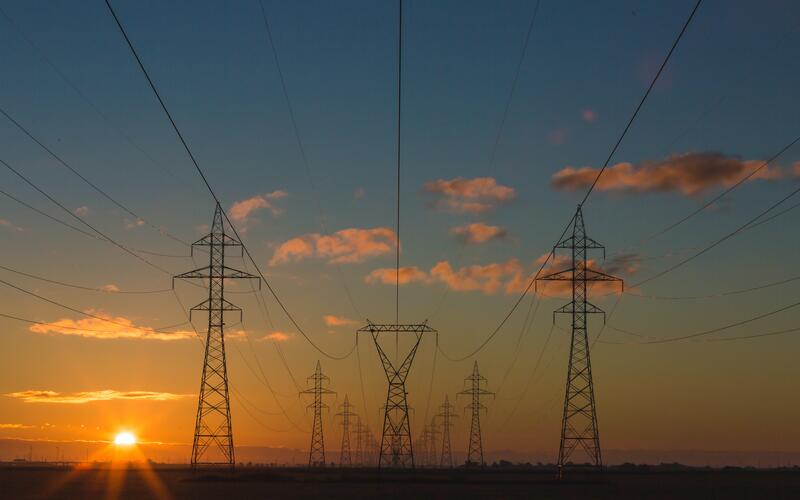Dr. Juan Arteaga: Ahead of the Curve

Dr. Juan Arteaga: Ahead of the Curve
He once dreamed of playing soccer for Mexico’s national team. Now based in Canada, Dr. Juan Arteaga researches energy storage – although the technology is not yet eligible for transmission and market services, when that day comes, Dr. Arteaga is ready.
Arteaga, Juan et al. ” Energy Storage as a Service: Optimal sizing for Transmission Congestion Relief.” Applied Energy 298 (2021): DOI: https://doi.org/10.1016/j.apenergy.2021.117095
The sun has not yet risen over the frosty foothills of Calgary. A solitary figure in a puffer jacket mounts a bike and quickly starts to pedal. Luckily for Dr. Juan Arteaga, the trip to the research laboratory is short. Still, he won’t remove his jacket all day.
Arteaga, a freshly-minted postdoctoral associate at the University of Calgary in Alberta, Canada, is an “optimizer.” He builds mathematical functions to maximize benefits and minimize costs. At the lab, he optimizes the size of energy storage projects. But Arteaga never intended to work in Canada or academia. Born and raised in Guadalajara, Mexico, Arteaga loved his life. He captured back-to-back national soccer championships for his hometown university. He earned a Bachelor’s and a Master’s degree. He secured a steady construction job and married his soul mate.
When the housing crisis hit Mexico, construction jobs vanished. Arteaga had to start his career over. As he searched for jobs, he remembered assignments that intrigued him. “During my Master’s in optimization, power systems were used as examples. They got me interested in energy systems, renewables, and finally storage.” Arteaga earned a renewable energy certificate and applied for Ph.D. programs in energy systems.
“[Applying] wasn’t easy. I only had my optimization background. Some universities said, ‘You’re out of your league.’” But Dr. Hamidreza Zareipour from the University of Calgary’s Department of Electrical and Computer Systems was intrigued by Arteaga’s skill set. “[Zareipour] was trying to build a team with different skills. I’m very grateful for the opportunity.”
Still, his new life in Calgary was daunting. He was “always cold” and missed the balmy Mexican weather, but more importantly, he had to teach himself about energy markets. “The first year was hard. I was doing lots of self-study, reading books about electricity day and night.”
He learned that energy storage can serve customers in two ways. As a “generation asset,” energy storage provides electricity for instant use, while as a “transmission asset,” it strategically stores electricity to prevent power line congestion. Arteaga studies the risks and benefits of allowing storage to provide both services concurrently. Unfortunately, storage as a transmission asset, or “SATA,” is not yet legal anywhere in North America.
But Arteaga wasn’t fazed. He dared to research an uncharted topic, so his initial inexperience became a strength. His most recent research optimizes the size of a SATA project by minimizing customer energy bills. Build too much SATA, and customers pay for capacity they don’t need. Build too little SATA, and customers pay a premium for congested power lines. Arteaga encourages energy planners to “Open your mind - what if you built something a little bigger? With extra capacity, what could you gain from SATA in the market?”
Arteaga is optimistic about SATA’s future. He thinks of himself as prepared rather than visionary. “SATA proceedings are happening now in most American jurisdictions. Canada is waiting to see what U.S. jurisdictions do. But once SATA is done evolving, and all the models are set up, action happens very quickly.” Energy regulators in the United States and Canada may cite Arteaga’s models to recommend SATA project sizes to developers. According to Arteaga, “SATA is a pathway to increase energy storage deployment. Energy storage will help integrate renewables, and renewables will decarbonize the power system.”
Arteaga often hikes the Canadian Rockies with his wife and six children. He has grown to love the mountains. During his ascent, he calculates the optimal size of a hydrogen fuel station for cars traveling through the mountain pass. There are very few hydrogen-powered cars, let alone hydrogen fuel stations, in North America. But Arteaga lives his life ahead of the curve.




